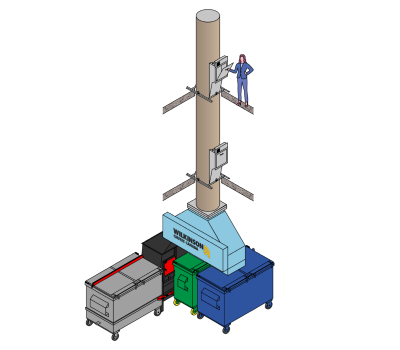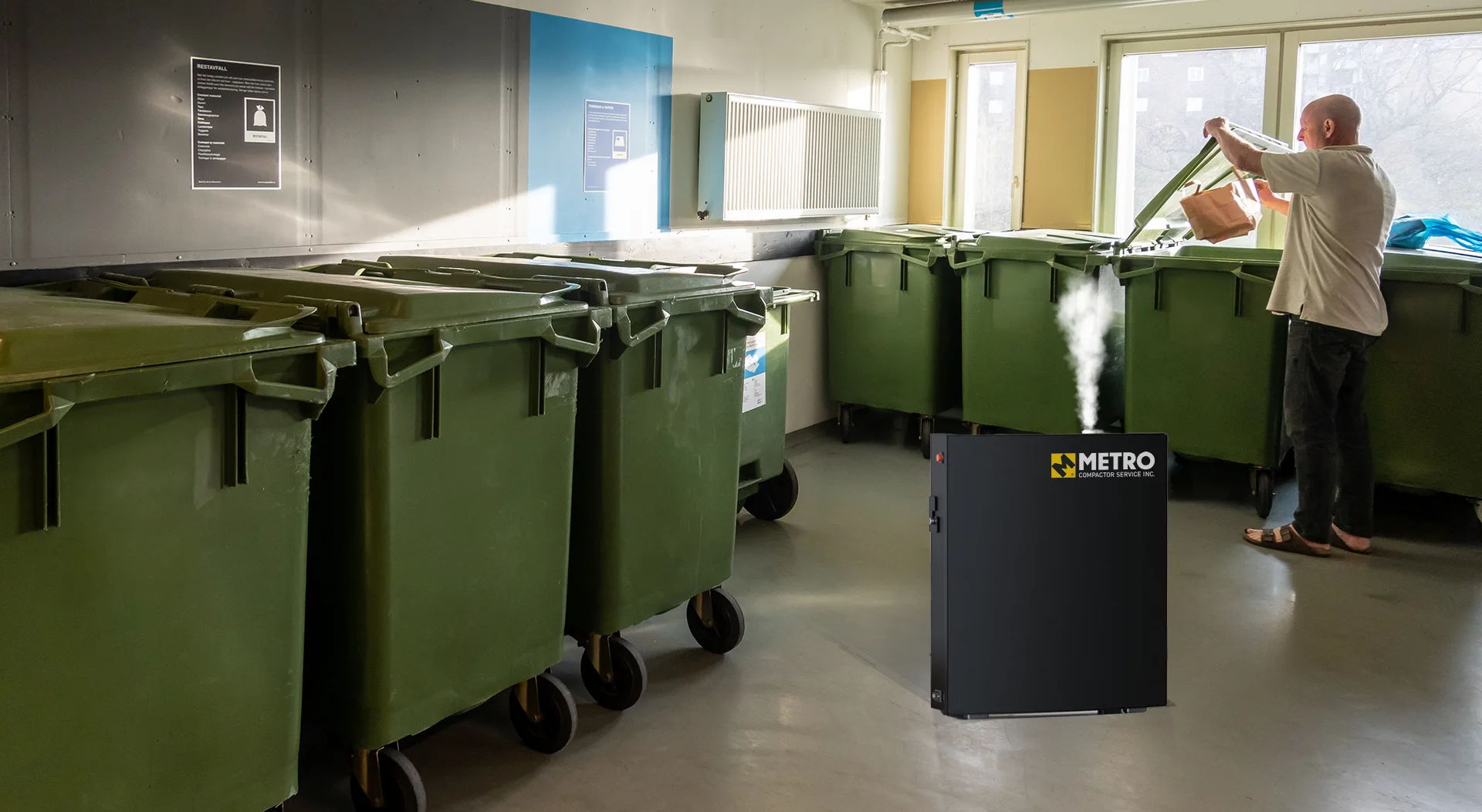Cardboard Baler Rental Solutions for Streamlined Recycling
Exploring the Important Function of Waste Equipment in Modern Recycling Processes and Sustainable Waste Disposal Practices
The critical function of waste equipment in contemporary reusing procedures underscores its value in achieving lasting waste disposal practices. Advanced systems, such as automated sorting modern technologies and compactors, not only improve performance but also play a critical duty in lowering contamination rates and improving product recuperation. As the need for more lasting options expands, it is crucial to analyze how these modern technologies adjust to progressing challenges within waste administration. What ingenious innovations are on the horizon that could further change these procedures?
Relevance of Waste Tools
Why is waste devices vital in the recycling procedure? The effectiveness of reusing operations hinges considerably on the availability and functionality of waste equipment. This category of machinery and devices is necessary for the efficient collection, processing, and sorting of recyclable materials. By helping with the splitting up of products, waste tools decreases contamination, which is extremely important in making sure high-grade recyclables that can be reintroduced into making cycles.
Moreover, waste tools enhances operational efficiency and safety and security within recycling centers. Advanced equipment, such as shredders and balers, permits the quick processing of huge quantities of waste, reducing labor costs and handling time. In addition, using specific devices decreases the threat of injury among workers by automating unsafe jobs.
Furthermore, the environmental impact of recycling is intensified by effective waste devices. By enhancing the reusing process, centers can considerably decrease the volume of waste sent out to land fills, consequently adding to sustainability efforts. In verdict, waste equipment is not just a secondary element of reusing; it is a fundamental facet that drives performance, safety and security, and ecological stewardship in modern waste monitoring practices.
Kinds of Waste Equipment
The performance of reusing procedures is closely linked to the particular types of waste tools utilized at the same time. baler rental. Numerous classifications of tools are important to the collection, sorting, processing, and transportation of recyclable materials
First of all, collection devices, such as waste collection vehicles and bins, is crucial for collecting recyclables from different sources, consisting of residential, business, and commercial locations. When gathered, sorting tools, including conveyor belts, shredders, and magnetic separators, plays an important function in distinguishing different product kinds, ensuring that pollutants are eliminated prior to handling.
Handling devices, such as balers and compactors, further prepares products for recycling by compressing and packaging them into convenient dimensions. This not only enhances space yet also improves transport effectiveness. In addition, specialized equipment like granulators and extruders is used for transforming products right into multiple-use forms, especially in plastic recycling.

Function in Recycling Procedures
In recycling processes, the duty of waste tools is essential in guaranteeing performance and performance at every stage. This tools encompasses a variety of equipment made to handle, procedure, and kind products that are to be reused. The first stage includes collection and transportation, where compactors and balers play a vital role in optimizing the volume of products for transportation, hence minimizing functional expenses.
As soon as at the recycling center, shredders and crushers enter blog play, breaking down materials right into convenient dimensions appropriate for additional processing. These machines add to boosting the surface location of recyclables, helping with a lot more reliable material recuperation. Arranging systems, furnished with sophisticated innovations such as conveyor belts and optical sensors, guarantee that materials are properly separated by kind, therefore making the most of the quality of the recycled final product.
Furthermore, customized tools for handling details materials-- such as glass, plastics, and metals-- makes certain that each type is dealt with in the most reliable manner. On the whole, the combination of advanced waste tools into the recycling procedure not only improves operations however likewise significantly adds to the total healing prices that site of useful products, underscoring its vital role in contemporary recycling efforts.
Effect On Sustainable Practices
Through the reliable operation of waste devices, recycling procedures dramatically boost lasting practices across numerous markets. This influence is realized through raised material recuperation prices, which minimize the need for virgin sources. By improving sorting and processing functions, advanced waste equipment lessens contamination in recyclable materials, consequently improving the top quality of recycled outcome. The decrease of waste sent out to land fills is another crucial benefit, as it lessens environmental deterioration and mitigates greenhouse gas exhausts related to decomposition.

Moreover, the assimilation of wise technologies in waste monitoring systems permits real-time information tracking and analysis, resulting in even more educated decision-making and operational effectiveness. As sectors progressively prioritize sustainability, the role of waste equipment ends up being critical fit techniques that straighten with ecological stewardship and regulatory compliance. Inevitably, the synergy in between waste devices and reusing procedures plays an important role ahead of time wider sustainability goals throughout areas and markets alike.
Future Patterns in Waste Administration
Arising trends in waste management are positioned to improve the landscape of reusing and resource recuperation considerably. One of one of the most critical shifts is the combination of advanced modern technologies such as fabricated intelligence, equipment discovering, and the Web of Points (IoT) These advancements assist in enhanced sorting procedures, boosting the efficiency and accuracy of reusing procedures. Smart waste containers geared up with sensors can check waste link degrees in real-time, maximizing collection courses and minimizing operational costs.
Additionally, the circular economy model is acquiring traction, promoting the idea of reusing materials rather than taking care of them. This fad urges companies to design products with end-of-life factors to consider in mind, driving the demand for innovative waste administration options.
Additionally, public awareness and involvement in sustainability practices are on the surge, causing enhanced engagement in reusing programs. Government policies are also advancing, with more stringent regulations on waste disposal and motivations for sustainable techniques.
As these fads converge, they create a much more effective, lasting waste administration system that not just decreases ecological impact but likewise fosters financial development with source healing and development in waste devices. The future of waste monitoring looks appealing, driven by modern technology and a dedication to sustainability.
Final Thought
In conclusion, waste equipment plays an essential duty in boosting the efficiency and effectiveness of modern recycling processes. As waste administration proceeds to develop, the importance of ingenious waste tools will remain vital in attaining sustainability goals and addressing the obstacles of resource exhaustion.